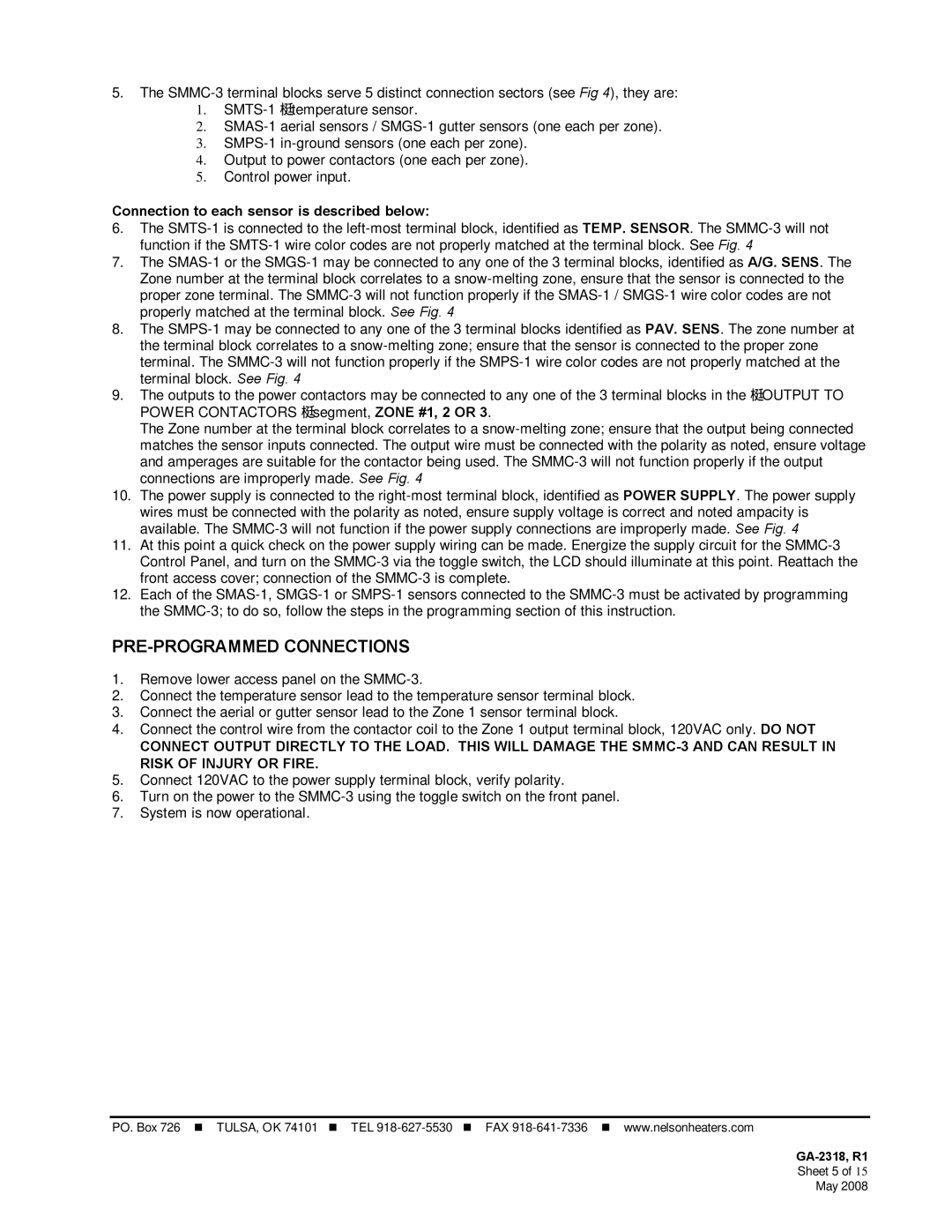SMMC-3 specifications
Emerson SMMC-3 is a cutting-edge controller designed to enhance the efficiency and reliability of industrial automation processes. This smart motor management controller is specifically engineered to optimize the operation of motors and related systems, making it a crucial component in various industrial applications.One of the standout features of the SMMC-3 is its advanced motor protection capabilities. It provides comprehensive protection against common motor faults such as overloads, phase failures, and short circuits. This ensures that the motors operate within safe parameters, thereby prolonging their lifespan and reducing maintenance costs. The SMMC-3 can be easily configured to meet specific application needs, making it versatile for a wide range of industries.
In addition to protection, the SMMC-3 offers real-time monitoring and diagnostics. It utilizes built-in sensing technologies to continuously monitor key motor parameters, including voltage, current, frequency, and temperature. This data is critical for predictive maintenance, allowing operators to anticipate potential issues before they escalate into costly downtime or equipment failure.
The SMMC-3 supports various communication protocols such as Modbus RTU and TCP, allowing for seamless integration into existing control systems. With its communication capabilities, users can easily access performance data remotely, facilitating better decision-making and resource management.
Another noteworthy characteristic of the SMMC-3 is its user-friendly interface. The device features an intuitive display and menu structure, making it straightforward for operators to configure settings, view performance metrics, and troubleshoot any issues. This ease of use significantly reduces training time and enhances overall operational efficiency.
Moreover, the SMMC-3 employs advanced algorithms and technologies for energy management. It helps in monitoring energy consumption, identifying inefficiencies, and providing recommendations for energy savings. This capability is increasingly important in today’s industrial environment, where reducing energy costs is a top priority.
In summary, Emerson SMMC-3 embodies state-of-the-art technologies and features that elevate motor management in industrial automation. With its robust protection mechanisms, real-time monitoring, versatile communication options, user-friendly design, and energy management capabilities, the SMMC-3 is an invaluable asset for industries striving for operational excellence and sustainability.
